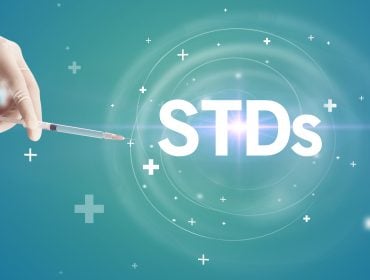Everything About HPV and Testing
HPV Testing
The human papillomavirus (HPV) is the most common sexually transmitted infection (STI) and there are more than 100 strains of the virus. Some strains of HPV go unnoticed and seem to cause no symptoms at all, while others can cause genital warts or various cancers.
HPV is so common that nearly all sexually active individuals (both men and women) will get a strain of the virus at some point in their lives. According to the CDC, approximately 79 million people in the United States have HPV, and an estimated 14 million American contract it each year.
The human papillomavirus is most often transmitted during vaginal or anal sex, but can also be contracted during oral sex. HPV testing exists to keep people safe, so get tested often.
Typically, HPV clears or goes away on its own, but when it doesn’t go away it can cause genital warts or certain cancers. HPV strains that cause genital warts are not the same strains that cause cancer.
How is HPV Transmitted?
A Comprehensive Look at the Transmission of Human Papillomavirus
We’ve mentioned it earlier, but the Human Papillomavirus (HPV) is a common sexually transmitted infection (STI) affecting millions worldwide. With more than 100 different strains, some of which can lead to severe health complications such as cervical cancer and genital warts, understanding how HPV is transmitted is crucial in preventing its spread. In this article, we will delve into the specifics of HPV transmission and explore the statistics related to its prevalence.
Skin-to-Skin Contact: The Primary Mode of Transmission
HPV is primarily transmitted through direct skin-to-skin contact during sexual activity. This includes vaginal, anal, and oral sex and genital-to-genital contact without penetration. Unlike other STIs that require the exchange of bodily fluids for transmission, HPV can be spread even if no visible symptoms or warts are present.
The Role of Genital Warts in Transmission
Certain strains of HPV, such as types 6 and 11, cause genital warts – small, fleshy growths that can appear on or around the genitals and anus. Although the presence of warts increases the risk of transmitting the virus, it is essential to note that HPV can still be transmitted even if warts are not visible or have been treated.
HPV Oral Transmission
Oral transmission of HPV occurs when an individual engages in oral sex with someone infected with the virus. This can result in oral HPV infections, which may potentially lead to oropharyngeal cancers. According to the Centers for Disease Control and Prevention (CDC), approximately 70% of oropharyngeal cancers in the United States are caused by HPV.
The Prevalence of HPV: Statistics and Risk Factors
HPV is highly prevalent, with an estimated 79 million people in the United States currently infected and 14 million new infections occurring each year. The CDC reports that nearly all sexually active individuals will contract at least one strain of HPV in their lifetime.
Age and Gender and Number of Sexual Partners
HPV infection rates are highest among young adults aged 15-24, who account for approximately half of all new infections. This is due to increased sexual activity and more sexual partners in this age group. Both men and women are at risk of contracting HPV; however, some studies suggest that men are more likely to be infected and transmit the virus.
The risk of contracting HPV increases with the number of sexual partners an individual has. A study published in the Journal of Infectious Diseases found that the risk of acquiring HPV increased by 2.4% for each additional sexual partner. Conversely, having fewer sexual partners reduces the likelihood of transmission.
Condom Use
While condoms can reduce the risk of HPV transmission, they do not offer complete protection. This is because condoms do not cover all areas of skin that may come into contact with an infected partner. Nevertheless, consistent and correct condom use is still recommended to reduce the risk of HPV and other STIs.
HPV and Genital Warts 
We mentioned it earlier, but let’s go into a little more depth about genital warts. They are small bumps or clusters of small bumps that appear in the genital region. They can appear as just one or many across the area. Genital warts can vary in size and shape– from round or flat, big or small, or even in the shape of a cauliflower. Nearly 360,000 people in the U.S. get genital warts each year.
HPV and Cancer
HPV can cause certain cancers, especially cervical cancer in women. The virus can also cause cancer of the vulva and/or vagina in women. In men, HPV can cause cancer of the penis. Both genders can get anal cancer or oropharyngeal cancer that can affect the tongue, tonsils, and pharynx.
Women should get screened for cervical cancer from age 21-65. According to the CDC, nearly 11,000 women get cervical cancer each year. Unfortunately, HPV and cancer can be related medically.
Secure and Confidential
STD testing services
The fastest results possbile - available in 1 to 2 days
Cervarix is a series of three vaccines that is for females ages 9-25. It is used to prevent HPV strains 16 and 18, which have been linked to cervical cancer. The immunizations are scheduled in a 0, 1 and 6-month pattern: The second vaccine is received one month after the first vaccine, and the final vaccine is received six months after the second vaccine.
Gardasil is an HPV vaccine that is also a series of three immunizations and is for both males and females ages 9-26. This immunization prevents four types of HPV strains: 6, 11, 16 and 18. The immunizations are scheduled in a 0, 2 and 6-month pattern: The second vaccine is received two months after the first vaccine, and the final vaccine is received six months after the second vaccine.
Gardasil is used for the prevention of certain vulvar, cervical and vaginal cancers in females. In males, Gardasil is used to prevent the warts. In both sexes, Gardasil is given for the prevention of genital warts caused by strain 6 and 11, and the prevention of anal cancers caused by strains 16 and 18.
Cervarix and Gardasil DO NOT provide protection against disease other strains of HPV or strains that an individual has previously been exposed through sexual activity, including the strains vaccinated for. If a dosage is missed from either Cervarix or Gardasil, the vaccination process must start over, so be sure not to miss any vaccines. Also, it is important to finish the entire series in order to prevent the strains of HPV these immunizations include.
Genital warts or abnormal Pap test (also called a pap smear) results are the most common ways people find out that they have HPV. A Pap test is a test done to look for abnormal cells of the cervix and uterus. HPV can change normal cervix cells into abnormal precancerous cells. If left untreated, the precancerous cells can become cancerous cells. Some individuals find out they have HPV after developing an HPV-caused form of cancer.
HPV and Pregnancy
 When developed during HPV and pregnancy, HPV treatment of the mother is often delayed until after delivery of the baby. HPV can cause genital warts to grow and sometimes genital warts can grow even larger due to pregnancy hormones. If they grow big enough to obstruct the birth canal, the baby may have to be delivered via cesarean section (C-section). In very rare cases, a mother can pass HPV to her baby during childbirth. An extremely small number of these infants develop a condition that causes tumors to grow in the throat called recurrent respiratory papillomatosis (RRP). These tumors are surgically removed but often come back. Mothers with HPV can breastfeed their babies.
When developed during HPV and pregnancy, HPV treatment of the mother is often delayed until after delivery of the baby. HPV can cause genital warts to grow and sometimes genital warts can grow even larger due to pregnancy hormones. If they grow big enough to obstruct the birth canal, the baby may have to be delivered via cesarean section (C-section). In very rare cases, a mother can pass HPV to her baby during childbirth. An extremely small number of these infants develop a condition that causes tumors to grow in the throat called recurrent respiratory papillomatosis (RRP). These tumors are surgically removed but often come back. Mothers with HPV can breastfeed their babies.
Testing Methods For HPV
There currently is no test approved to test for HPV in men, and there is not currently a test for HPV of the throat or mouth.
Nucleic Acid Amplification (NAA)
- Human Papillomavirus (HPV) High-Risk DNA Detection
- Detection of high-risk type HPV DNA sequences in female exfoliated cells (swab) or tissue biopsies.
- The test provides a qualitative molecular detection of 13 different human papillomavirus high-risk types: 16, 18, 31, 33, 35, 39, 45, 51, 52, 56, 58, 59, 68 without differentiation of the individual type.
HPV Treatment
There is no HPV treatment for the human papillomavirus itself, but the conditions and diseases it causes can be treated.
- Genital warts can be treated by a doctor. If left untreated, warts may go away on their own, remain the same, or enlarge in size.
- Cervical precancer (precancerous cells) can be treated. Treating precancerous cells is easier and more stable than treating cancer itself, this is why routine Pap tests are so important.
- HPV-caused cancers can be treated in their own ways depending on what type of cancer they are. Cancer types are easier to treat when caught early on. HPV treatment does not exist, but hopefully, someday.
Key Takeaways 
- The human papillomavirus (HPV) is the most common sexually transmitted infection (STI) and there are more than 40 strains of the virus.
- Some strains of HPV go unnoticed and seem to cause no symptoms at all (asymptomatic STDs), while others can cause warts or various cancers.
- HPV is so common that nearly all sexually active individuals (both men and women) will get a strain of the virus at some point in their lives.
- The human papillomavirus is most often transmitted during vaginal or anal sex, but can also be contracted during oral sex.
- Genital warts are small bumps or clusters of small bumps that appear in the genital region. Learning how and why is HPV transmitted is key to being safe.
- Typically, HPV clears or goes away on its own, but when it doesn’t it can cause warts or certain cancers.
- There are two immunizations series available to help prevent certain strains of cancer: Cervarix (for females only) and Gardasil (for males and females).
- Genital warts or abnormal Pap test (Pap smear) results are the most common ways people find out that they have HPV. Some individuals find out after developing an HPV-caused form of cancer.
- HPV can cause cancer of the cervix, vulva, vagina, penis, anus and/or cancers of the mouth and throat.
- There currently is no test approved to test for HPV in men, and there is not currently a test for HPV of the throat or mouth.
- There is no treatment for the human papillomavirus itself, but the conditions and diseases it causes can be treated in their own ways. We hope this article help you learn how is hpv transmitted.
Read Section 11 on Trichomoniasis and Trich Testing.
Medically Reviewed by J. Frank Martin JR., MD on May 17, 2023
Secure and Confidential
STD testing services
The fastest results possbile - available in 1 to 2 days

Tagged
Categorized As
Author: Nick Corlis
Nick Corlis is a writer, marketer, and designer. He graduated from Texas State University in San Marcos, Texas, with a degree in Digital Communications. Nick is proud to be able to help eliminate the stigma of STD testing through his writing and is always trying to advocate the importance of your sexual health. Before STDcheck, his favorite way to develop his writing skills was by accepting various writing jobs in college and maintaining multiple blogs. Nick wears many hats here at STDcheck, but specifically enjoys writing accurate, well-researched content that is not only informative and relatable but sometimes also contains memes. When not writing, Nick likes to race cars and go-karts, eat Japanese food, and play games on his computer.




